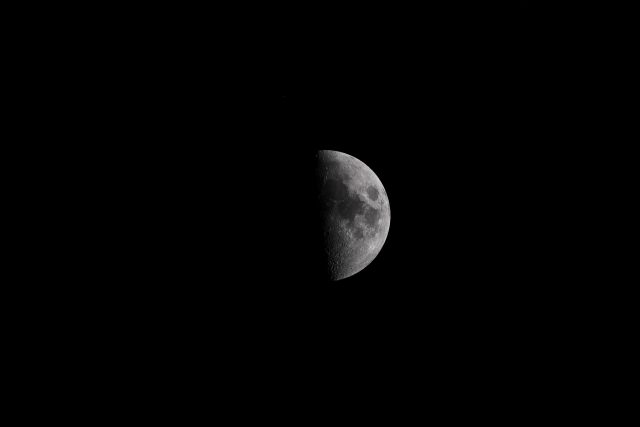
Images
Comet Johnson on April 1, 2017
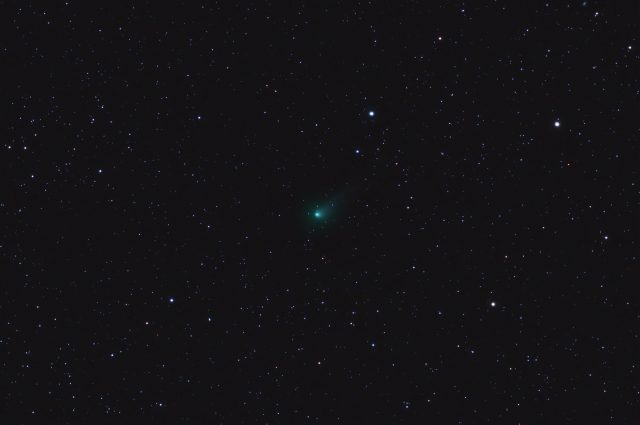
Here’s a quickie of Comet Johnson. I took two test images before the automated run, which I ended up using. But, I was pretty tired by the time I got to this one, so I let it shoot automated while I took a nap. Unfortunately, the guiding got screwed up after only 11 sub-images and I didn’t shoot more of it after I woke up since it was near sunrise and I needed to shoot calibration data for my other stuff instead. Oh, well…
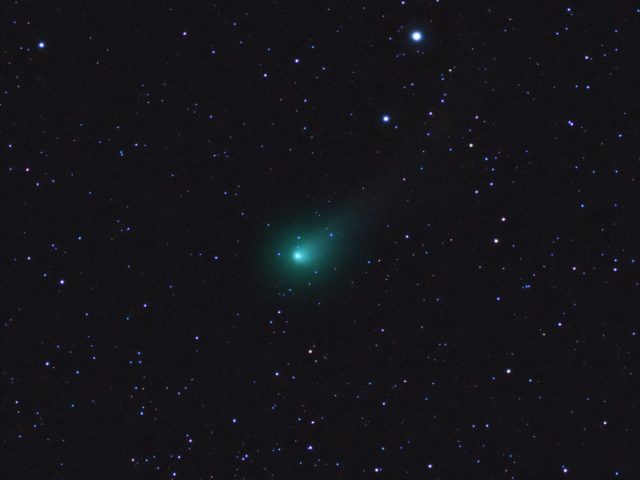
Comet 41P/Tuttle-Giacobini-Kresak – Closest to Earth Day
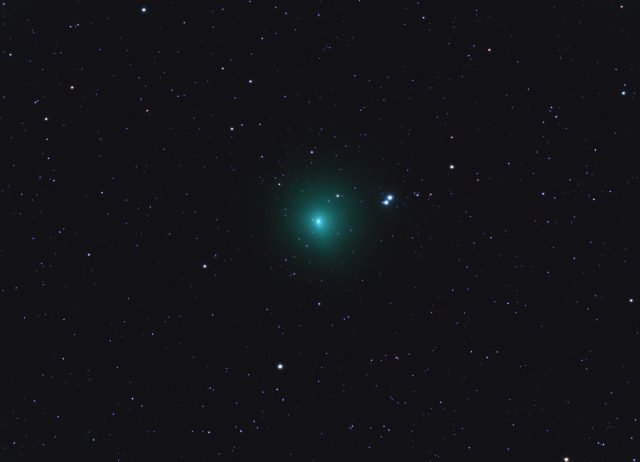
On Friday evening, March 31st (April 1st in Universal Time) I drove out to a dark sky site and got as many images of Comet 41P as I could. 41P/Tuttle-Giacobini-Kresak was closest to Earth on this day and I was hoping I could document the encounter.
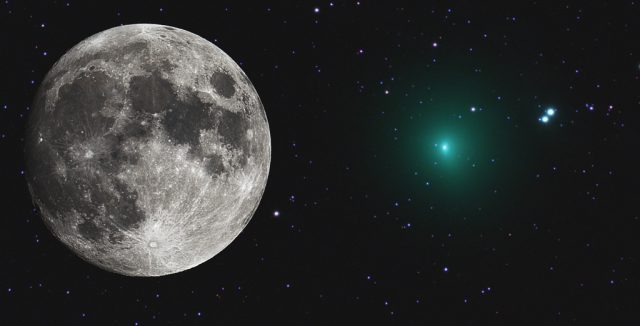
I ended up with 80 good sub-images out of about 100. Unfortunately, I had guiding problems, equipment issues and mount troubles. A bad connection on my new battery pack kept me from starting until I re-rigged it and during the night the mount kept making knocking noises and jerking in RA, making lines instead of star points every 5 to 10 sub-images. I’ll have to figure that one out, since it never did that before.
At least it was very dark and transparent. I was camera noise limited and not LP limited for my exposures. It was kind of weird to shoot 7 minute subs and see that I still had a ways to go before mid-histogram. I wish it was like that every time. lol
Comet 41P on March 31, 2017, 02:46 UT
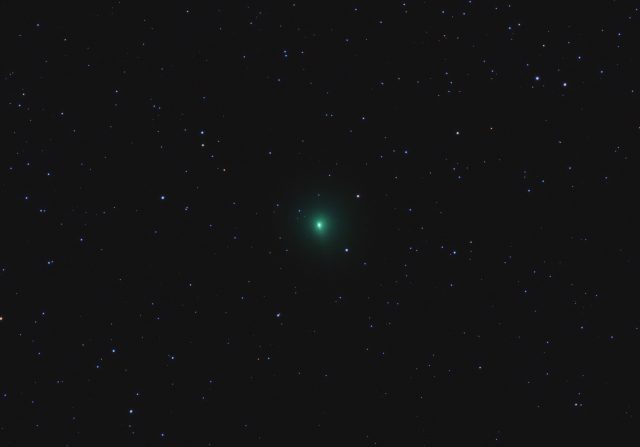
Here’s another image of Comet 41P/Tuttle-Giacobini-Kresak taken from a Bortle red zone location which is in the middle of a larger city. No filters and a stock camera on a F/5.6, 480mm focal length telescope were used.
I was able to shoot 2 minute exposures at ISO 400 before it maxed out the light pollution (LP.) This is the StarFreeze version of the data. I have lots more data, too. There is another set of 40x120sec shots and some 90 sec, ISO 400 sub-images I did early on when the comet was lower in the sky and deeper in the LP muck.
For now, this doesn’t look too bad to my eye, considering the conditions. I would estimate the coma is twice the size we see here from a dark-sky location. I’m glad the sky was nearly transparent this night. It made processing easier.
Here’s the obligatory star streaks version:
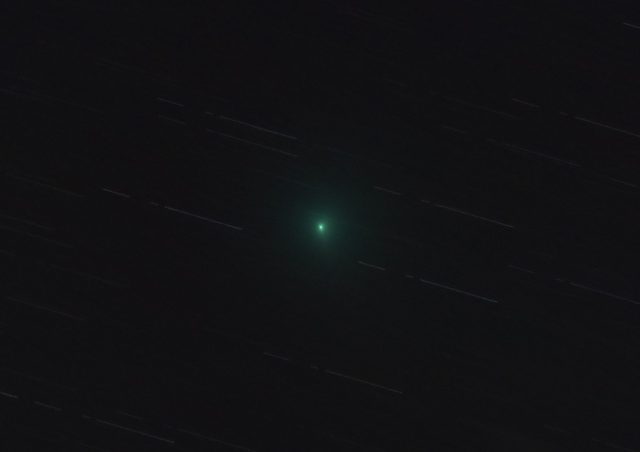
Comet 41P Leaving the M108 and Owl Nebula Area
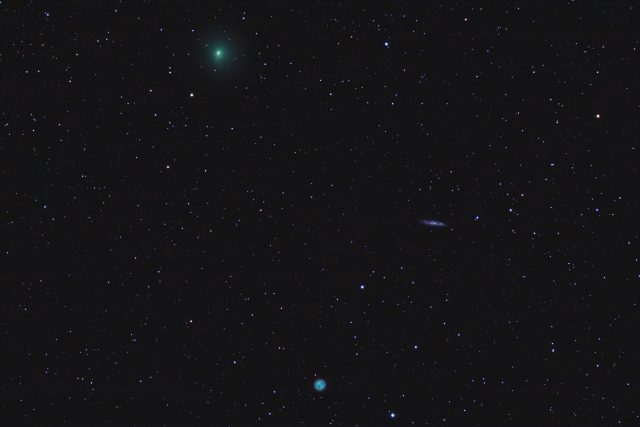
On the night following the encounter between M108, Comet 41P and the Owl Nebula, the comet was still in the field of view of my setup, so I went back for seconds. I just couldn’t pass up the opportunity to shoot a comet conjunction again!
I went with 3 minutes sub-images at ISO 200, since the 1 minute ISO 800 subs were too cooked by the LP for my taste. Unfortunately, the sky was not as transparent as the previous night and that half-stop of underexposure was needed to get around that. The trade-off was I didn’t get as much of the comet’s coma. Oh, well.
Also, at that exposure length, the comet’s pseudo-nucleus trailed a bit, since it is moving with respect to the Earth and stars and slowly picking up speed as time goes on, to boot. It was not enough to notice if I carefully over-exposed it a bit in processing to make it fatter, luckily. Check the star streaks version, which I did not overexpose, and you can see how far the comet moved in 3 minutes:
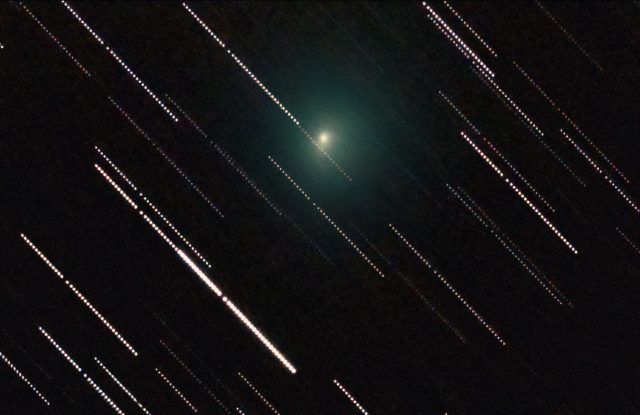
A Televue TV-85 w/0.8x focal reducer/field flattener, a Canon T3, my laptop running EQMOD, driving my Atlas EQ-G mount and PHD2 Guiding with an Orion StarShoot guider/Orion Ultra-Mini guidescope was some of the equipment used.
Comet 41P Encounters M108 and the Owl Nebula
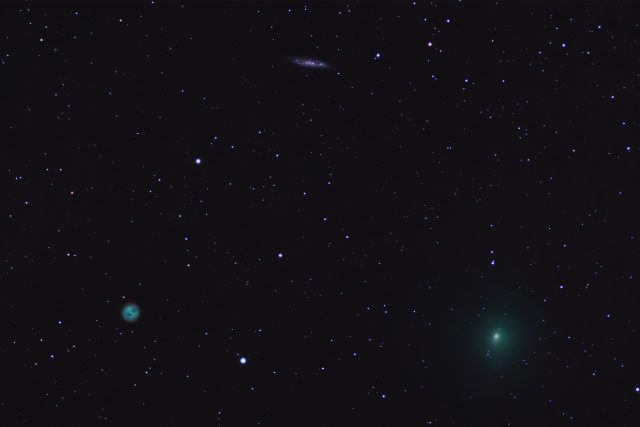
It is not uncommon for comets to pass near famous Messier objects or NGC catalog objects and put on a good show. This comet encounter is special in that there are two famous objects that the comet is having a conjunction with. One is a relatively bright galaxy called M108. The other is the Owl Nebula, one of the better planetary nebulae in the skies.
I shot this with the Canon T3 and Televue TV-85 combo. I used one minute sub-images at ISO 800 and that was about max for the skies I was under. I’m sure people with darker skies got better results. However, I think being able to pull anything out of the skies at this location is great. LP was bad and I had terrible gradients to deal with in post-processing, but I managed. 🙂
I also did a quick star-streaks version that seems to show a longer tail. Not sure, since there were some dust doughnuts left over from an apparently bad batch of flats I used and I had to clone them out. These aberrations were in the tail area, so it could be some remnant of that.
Check it out:
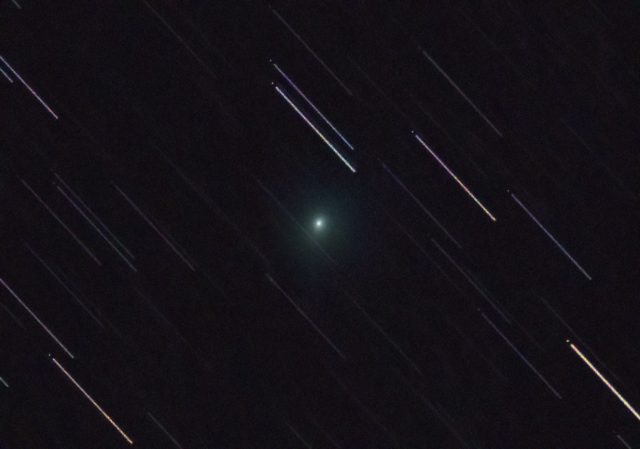
Comet 41P on Mar 21, 2017
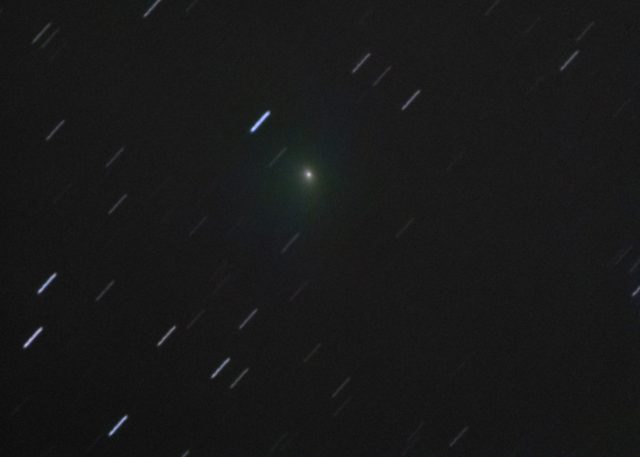
One thing I’ve found out with using electronically assisted methods to view dim objects in bad LP conditions is this: Live stacking generally improves things, but only at first. If you want something as dim as Comet 41P to show any more than just the inner coma, you have to stack with lots more subs using more advanced stacking methods than just average and additive.
So, I shot 103 subs-images, along with 30 darks and about 30 bias images for this object. I brought them into IRIS and used only the first 60 because that is all I could get to align. The usual methods of aligning based on the drift per hour in x and y coordinates doesn’t work if the sub-images are not timestamped. This is another deficiency in the low-end capture and stacking program, RisingSky (ToupSky.) Not sure if SharpCap has the same issues.
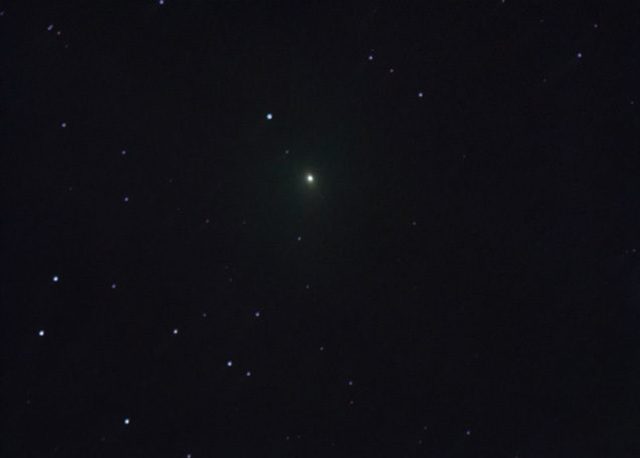
Anyway, at least I was able to obtain a basic image and considering the conditions, it is not too bad. Compare this to my previous effort with the Aptina AR0130 sensor. This would probably work lots better at a dark sky site. But, I don’t know if I would waste time on shooting with the RT224 when I could use the Canon T3, which is more sensitive when it comes to comets and captures a much larger field of view.
M42 with a RT224
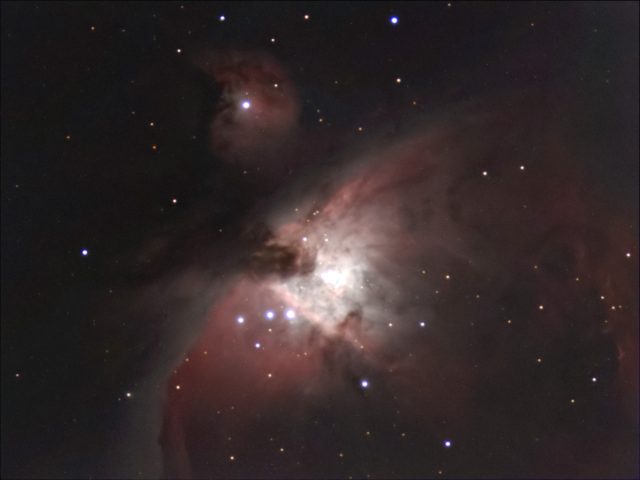
The target of choice, if it is available, is always M42 when you have some new astrophotography gear to try. I went after it as my first object of the night for this session. I missed it the previous night which was first light for the new RisingTech Sony IMX224 camera because my mount was being a pain when trying to get it aligned and pointing accurately.
This was captured in the RisingTech (RT) version of ToupSky, the software that comes with all ToupTek cameras. RT has it re-branded and calls it RisingSky. lol. I installed it, even though I already had ToupSky installed.
One thing it has that the regular download of ToupSky doesn’t have is Live Stack. It is similar to what SharpCap does and the main reason why I was using that program instead of ToupSky when I imaged with the ToupTek Aptina AR0130 camera.
It does a decent job of stacking when the stars are bright, not so decent when they are dim. About the same as SharpCap. That’s why others are using AstroToaster to live stack, since it uses DeepSkyStacker as its backend, which is more powerful than the ToupTek offering and has better calibration support.
My only gripe about RisingSky is the TIFF save and export supports only 8-bit, and I used that instead of FITS when I saved. My bad for not checking first. The post processing would have went better if I had 16-bit to start with. Live and learn, as they say.
The next night after the above image was taken, I tested the camera shooting with a 0.8X focal reducer for F/5.6. It definitely made a difference in the speed and I got more nebula with less exposure time. Plus, the field of view was wider:
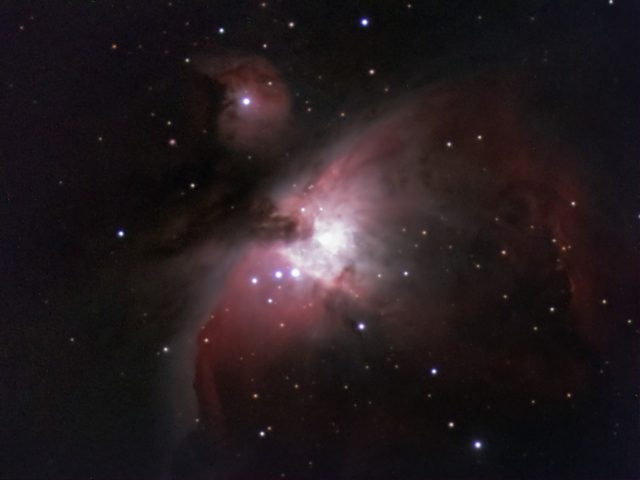
The F/5.6 setup is also better since the camera is screwed onto the focal reducer with a T to C adapter. At F/7, I had to use an 2 inch extension with a regular eyepiece holder and leave it and the camera hanging out of the focuser a ways to even reach focus. So, there is less chance of misalignment or something slipping out of place with the reducer and T to C adapter.
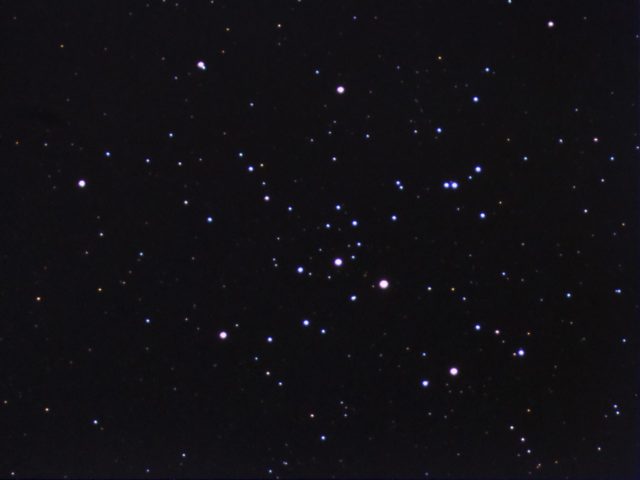
In addition to M42, I also got some time on M41, which is an open cluster in the constellation Canis Major, next door to Orion. Open clusters are too easy with this setup. I can’t wait to try it on some globular clusters!
First Light – RisingTech Sony IMX224 Camera
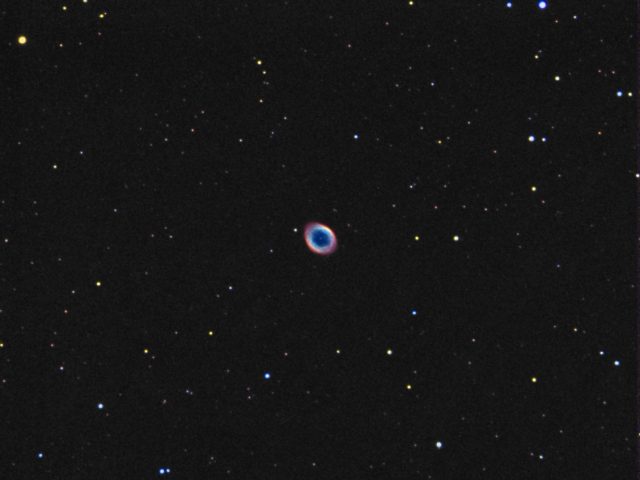
I did it. I bought a RisingTech (ToupTek) Sony IMX224-based eyepiece camera. Its a nice little low-noise cam that beats the pants off of the Aptina AR0130 color CMOS chip in my other ToupTek camera, as far as noise is concerned. I got it mainly to do Electronically Assisted Astronomy (EAA) which is sometimes all that is possible in a very light polluted environment.
I love the immediate display of a color image that it gives you. It lets you hop around the sky and see objects like dim galaxies and nebula without having to wait until you process the images to see what you’ve captured. There are various software packages that let you stack images on the fly and you don’t have to save any of the sub-images if you don’t want to. It creates the stack and you save one file in the end, if you like it enough.
I did a little of both keeping images for later and just looking at stuff and not saving the stack when moving on to other objects. It was fun and I actually stayed up all night doing it.
I plan on doing lots more of this EAA form of amateur astronomy in the future and I think the new camera was a good investment ($168.00 shipped from China, total!) It is inexpensive enough that almost any amateur astronomer can now afford one.
Comet 41p with a Toupcam
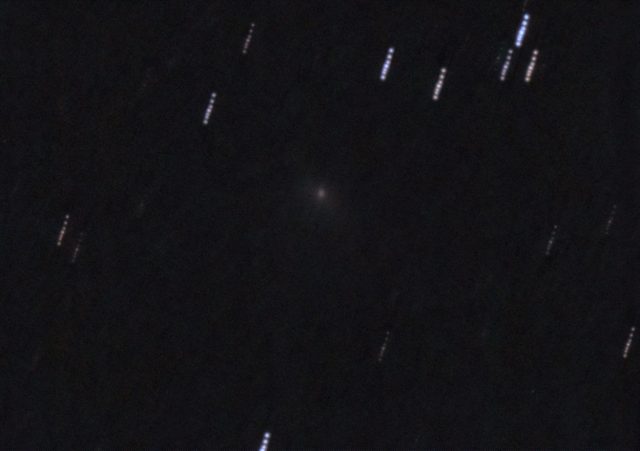
I was fooling around with the Toupcam from a red/white LP zone and trying to get Comet 41P to show up. I ended up using SharpCap and doing live stacking with between 10 to 23 x 8 sec exposures for each stack. Then, I combined those stacks in IRIS and aligned them on the comet. It came out to be a total of 18 minutes worth of exposure, albeit in a heavy LP zone. So, I got it to show up, but the color and faint details of the tail and coma got lost in the noise.
